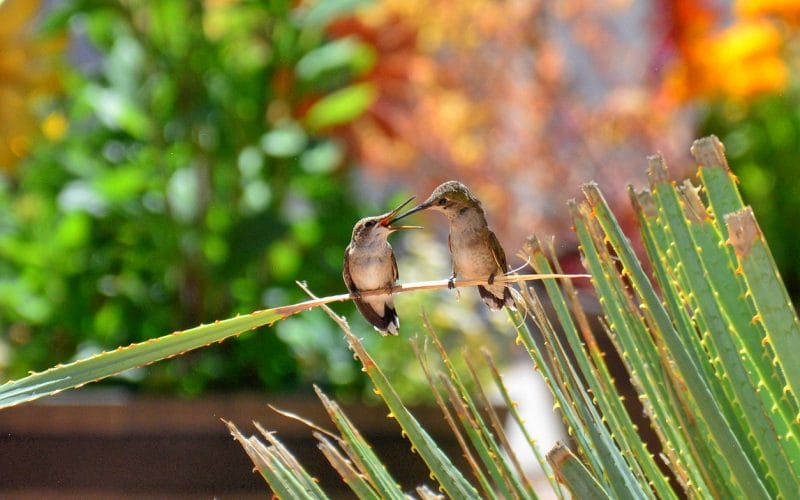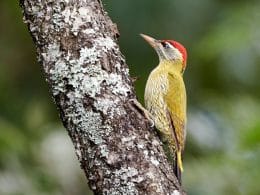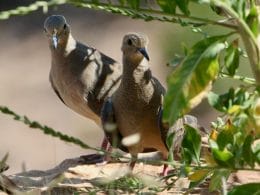Birds are beautiful, magical creatures. Hummingbirds are even more so with their colorful wings and long beaks that most songbirds don’t have.
Young hummingbirds are as much a wonder as their parents. They’re a sight to watch, from the day their eggs hatch and until they’re fully grown and can fly.
If you’re curious about the world of a hummingbird and would like to learn more about the beginnings of their life cycle, keep on reading.
What Does a Baby Hummingbird Look Like?
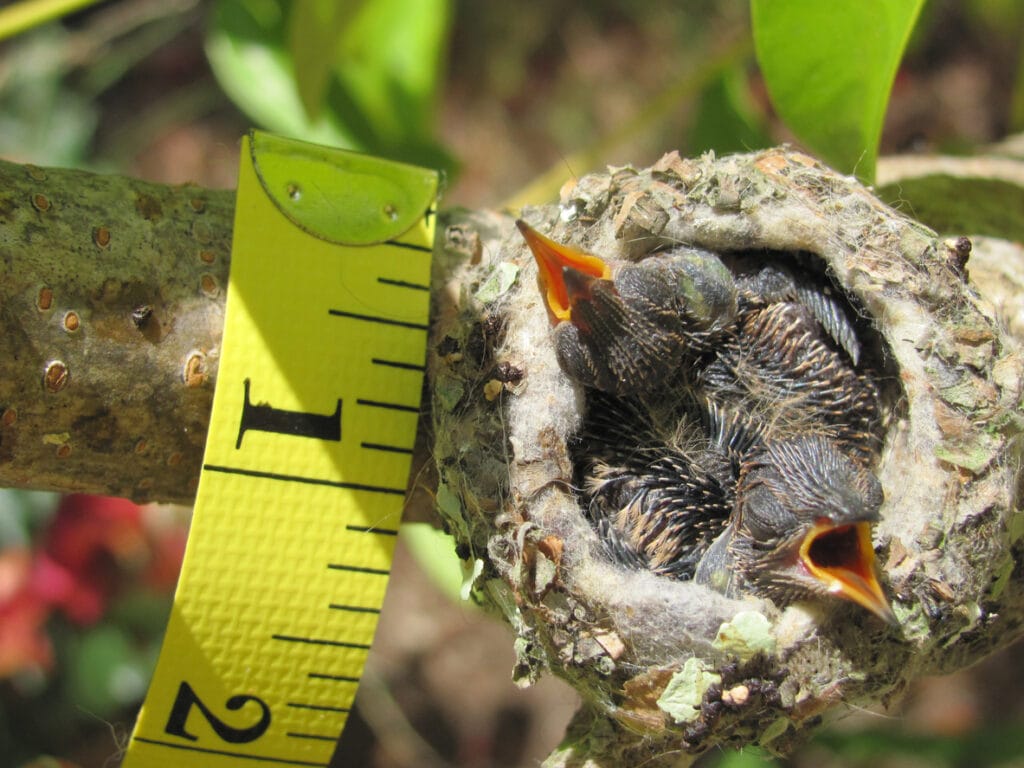
First things first, how can you tell a baby hummingbird apart from other baby chicks?
Fun Fact: baby hummingbirds are the tiniest birds globally and only weigh 0.02 ounces. Another scientific fact, they’re not called ‘baby hummingbirds.’ But instead, ornithologists call them ‘chicks, nestlings, or hatchlings.’
A hummingbird hatchling is born about one cm long. That’s about the size of the fingertip of your index finger! The body of a baby hummingbird is also black, although sometimes it can be gray or pink.
Their bodies are covered in yellow-like stripes. These stripes grow out to be porcupine-like after ten days. Then, they grow into a complete set of feathers when they’re three weeks old. They have tiny beaks and don’t get their parents’ long beaks until they’re fully grown.
A newly hatched hummingbird is born blind. They can’t open their eyes for ten days. On top of that, their legs are fragile, and they can’t stand on their own.
Because of this, a baby hummingbird is entirely helpless. They can’t even regulate their body temperatures or feed themselves. Instead, they rely on their mothers for warmth, food, and protection.
This is also because songbirds are altricial birds and aren’t precocial birds, like chickens and ducks. The young altricial birds are born more dependent on their parents than precocial ones.
Now that you have a detailed picture of what a baby hummingbird looks like, let’s answer other important questions:
How Do Hummingbirds Get Together?
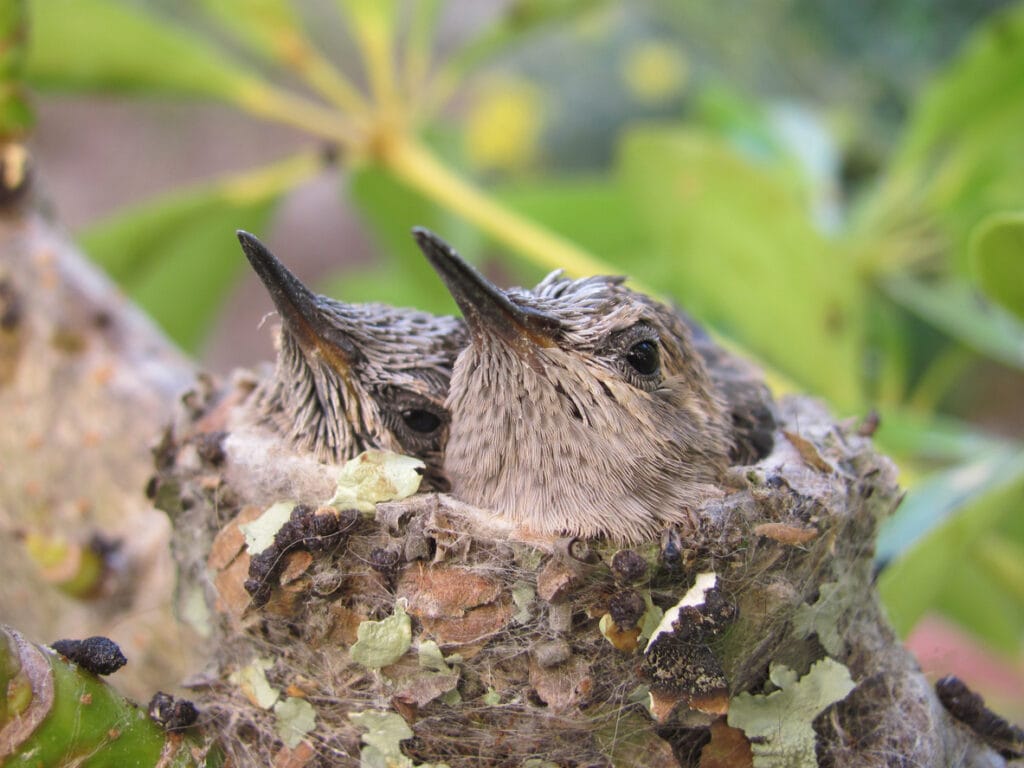
Before becoming a mother, the female hummingbird must mate first. The mating season for hummingbirds differs according to the climate and migration times for both males and females.
Once they finally meet, the mating season begins, continuing until the males need to start their winter migration. Another fun fact: hummingbirds aren’t monogamous, so the males can mate with multiple females every season.
Males attract female hummingbirds by flashy performances, such as dancing or an aerial diving display. It then takes 24 to 30 hours for an egg to develop inside the female’s body.
How Do Baby Hummingbirds Grow?
Depending on the hummingbird species, a female hummingbird typically lays two eggs per mating season. However, she doesn’t lay them on the same day but a day or two apart.
The eggs of a hummingbird are the size of a jellybean or a pea and weigh less than an ounce. It takes around 11 to 18 days for the egg to hatch. However, if the weather is cold outside, the baby chicks won’t come out until later.
The mother spends most of her time incubating the eggs during those two weeks. She makes sure to keep the eggs at 96°F. Plus, she times the incubation so that both eggs hatch on the same day.
While doing that, the soon-to-be-mother also starts to build a home for her future babies. First, she’ll create a nest that’s no wider than a penny. She uses spiderwebs to tie the nest to a branch or even a leaf.
She then lines it with thistle and other soft plant materials and decorates the nest’s exterior with lichens to camouflage her home from predators and humans.
Author Note: Building a home for future baby hummingbirds takes about a week. At this time, the baby’s father isn’t allowed near the nest until the baby is fully grown.
Why does the baby grow up fatherless? Because the colorful, glossy wings of males help attract predators to the nest. So, the job of male hummingbirds ends after breeding is over.
Once they’re hatched into the world, these nestlings require constant care and attention, starting with their food.
What Do Baby Hummingbirds Eat?
As if the mothers aren’t doing enough, keeping the hatchlings warm and protecting them from dangers, their diets are also complicated.
Since baby hummingbirds have weak bones and beaks, they need a high-protein diet. This will mainly include soft-bodied insects and bugs, such as mosquitoes, gnats, aphids, caterpillars, and fruit flies.
Author Note: A hummingbird mother will also feed her babies nectar to meet their high-energy needs, so they can grow up to be healthy and strong.
Like that wasn’t needy enough, baby hummingbirds need to be fed every twenty minutes. So you can imagine the stress the mother is under, between having to provide both herself and her babies that frequently.
The mother continues to feed her chicks for a month. In some species, she’ll wait a bit longer until her babies are 45 to 60 days old, and then she’ll let them fend for themselves.
How Does a Mother Hummingbird Feed Her Young?
They’re born with tiny beaks and can’t even stand up. So, of course, a baby hummingbird would be challenging to feed. That’s why the birds rely fully on their mothers for food.
A mother uses a method called regurgitation to feed her young. This process includes the mother partially digesting the food and nectar in her throat, then inserting it into their mouths through her beak.
While the food is being transferred this way, you can actually see the mother’s throat swell and pump the food in an up and down motion into their tiny beaks.
How Long Before a Baby Hummingbird Can Fly?

Thankfully, it doesn’t take long before the mother can step down from her endless duties. Three weeks after the eggs hatch, a mother’s job becomes to monitor her children until they can fly on their own.
A three-weeks-old hummingbird is called a pre-fledgling. Their beaks and feather tails will have grown out to be half an inch long. And even though they’re fully feathered, they still can’t fly properly. That’s why they’re often found on the ground.
At this age, a pre-fledgling hummingbird exercises its wings often to prepare itself for its initial flights. They’ll fly near or around the nest, usually with the mother nearby.
Even though they’ve technically left the nest, the mother continues to monitor and care for them for about another week or so. During this time, she’ll teach them how and where to find food and nectar.
Author Note: When a month or two pass from the hatching date, a baby hummingbird becomes fully grown, capable of flight. We call them fledglings at this stage.
Although they become mature and independent adults in only one month, fledglings can’t have their own babies until they’re one year old.
How Can You Help a Single Mother and Her Baby?

By now, you might be wondering if there’s something you can do to help the most probably stressed-out hummingbird mother and her helpless child. Good news! You absolutely can.
How Can You Help a Mother Hummingbird?
If you have a garden, you can set up your own hummingbird reserve and not only attract hummingbirds but also help create an easier habitat for the mother hummingbird to fulfill her duties.
You can start with hanging a hummingbird feeder. Fill it with enough sweet water and food to lessen the mother’s trips to get food. Make sure to clean it properly to decrease health risks.
You can also buy the seeds of tropical and native plants that are rich in nectar and grow them in your garden. This will help the mother and kids maintain healthier bodies.
If your curiosity gets the best of you, and you’d like to watch the birdies grow up, make sure to do so at a distance. Hummingbirds are highly alert birds. They’re always looking out for potential threats and predators. So remember not to pose a threat by being too close to their nests.
How Can You Help a Young Hummingbird?
Most birds would reject their newborns after a human has touched them. This isn’t the case for hummingbirds. So don’t hesitate to pick up the baby bird when you can.
If you find a pre-fledgling hummingbird on the ground, don’t immediately assume it’s injured or lost. Check if either its nest or mother is nearby first before you take action.
Top Tip: If you do come across an injured hummingbird, it’s not that hard to nurse them back to health. With proper care, even the baby ones will grow up fine.
Wrapping Up
Hummingbirds are wonderous songbirds, and a baby hummingbird is probably the greatest wonder of it all.
They’re born helpless, but they grow up to be beautiful creatures. The mother spends much effort feeding, teaching, and keeping them warm. An effort that’s worth it once her babies go on their first migration journey.
Want to do good for the hummingbirds? Take the time to grow some native flowers and hang some hummingbird feeders.
FAQ
Because they are tucked up safely in their nests. They only leave when they are large enough to take care of themselves. At that time, you wouldn’t be able to tell them apart from the adult birds either.
Studies have shown that the survival rate of baby hummingbirds is around 60%. Young birds may die because of predation, injury or cold.
On average, the hummingbird heart beats at over 1,200 a minute. It has to be this fast to keep the bird in the air as it flaps its wings at up to 180 times a minute. This bird is a high energy user!






